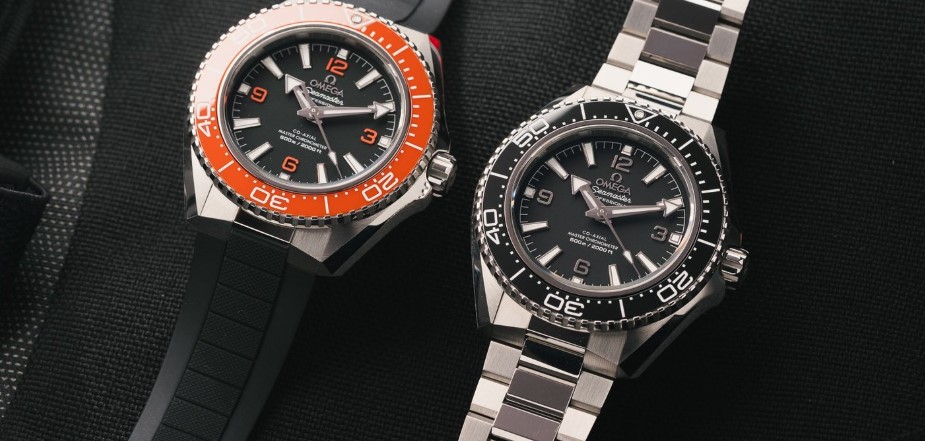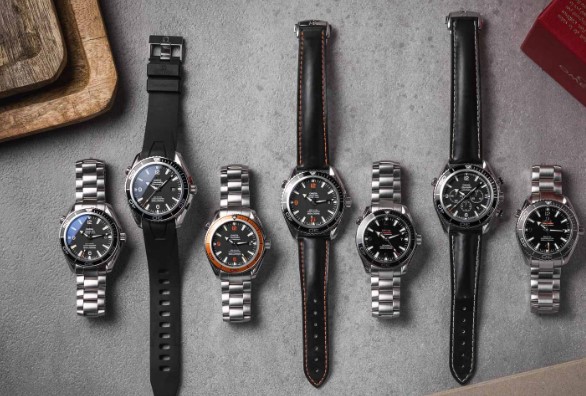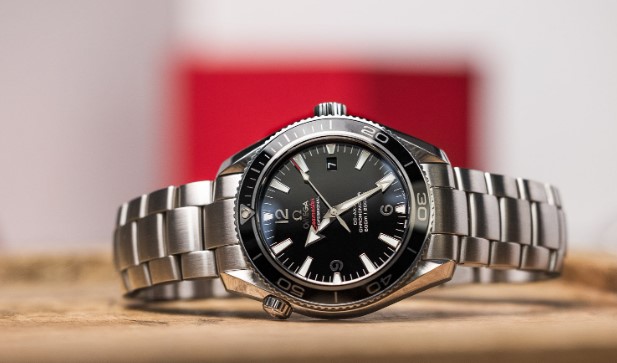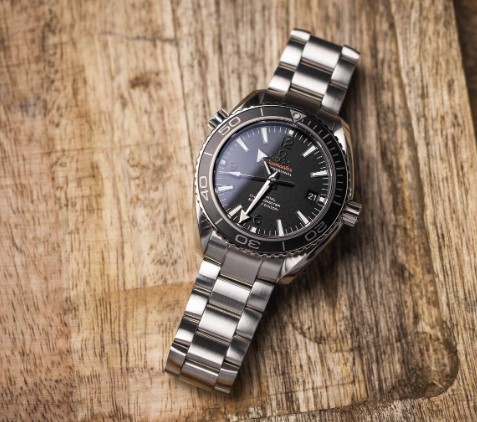Twenty years after the debut of the first Planet Ocean, Omega has introduced the fourth generation of this collection of professional dive replica Omega watches UK. The update features a complete redesign, with significant changes to the case and bracelet architecture. There are also technical improvements that help bring it up to par with the brand’s ever-improving performance standards. While the design has evolved, the Planet Ocean retains its core identity. The collection continues to draw on Omega’s ocean-going heritage, preserving the key elements that have defined the line since its introduction.

Today, we get to witness the next step in the Planet Ocean lineup’s evolution, which coincides with the watches’ 20th anniversary. It’s been a long time coming, so it’s impossible not to get excited about what feels like a turning point for one of Omega’s most significant dive top fake Omega watches. But before we look to the new, it’s worth looking back at what came before it. Many of you will have already read my colleague Thomas’s excellent historical overview of the Planet Ocean. If you haven’t, there’s no need to worry. Before diving into the new fourth-generation watches introduced today, I’ll provide a brief refresher. However, if you want to jump to the action, a little bit of scrolling will get you there, and I won’t hold it against you.
The Omega Seamaster Planet Ocean debuted in 2005 as a professional-grade dive watch positioned above the Seamaster Diver 300M in the brand’s lineup. Designed to reach depths of 600 meters, it doubled the water resistance of the Diver 300M and incorporated several technical features aimed at professional divers, including a helium escape valve, Broad Arrow hands, and Omega’s Co-Axial caliber 2500. The first-generation perfect replica Omega Seamaster watches were available in 42mm and 45.5mm cases and featured the now-iconic orange bezel that quickly became a recognizable design element of the collection.
In 2009, Omega introduced the first Liquidmetal Planet Ocean. This update applied Omega’s Liquidmetal technology to the black ceramic bezel insert, creating metallic numerals fused into the ceramic surface. The innovation provided improved scratch resistance and durability while adding a new aesthetic dimension to the watch. This marked the start of a period in which Omega increasingly incorporated advanced materials and technical innovations into the Planet Ocean line.

The second generation, launched in 2011, further refined the collection. The cheap copy Omega watches featured ceramic bezel inserts with Liquidmetal markings, glossy dials, and sapphire-equipped case backs that revealed the in-house-developed caliber 8500. This movement included a silicon Si14 balance spring, improving resistance to magnetic fields, along with twin barrels for increased power reserve. In addition to technical upgrades, the second generation expanded material options, including titanium and blue ceramic variants.
In 2014, Omega achieved a technical milestone by producing the first orange ceramic bezel insert for a Planet Ocean GMT in platinum. Creating ceramic in the distinctive orange tone was quite the feat. And Omega marked the occasion with a special engraving on the case back.
The third generation, introduced in 2016, represented a significant step in precision. All watches became METAS-certified Master Chronometers. They gained the corresponding higher magnetic resistance and enhanced reliability. New 39.5mm and 43.5mm case sizes provided slimmer, more wearable proportions, while aesthetic updates included the introduction of 18K Sedna Gold and ceramic bezels with rubber detailing.
That year, Omega also launched the Seamaster Planet Ocean Deep Black, a collection of full-ceramic dive watches capable of reaching 600 meters, combining GMT functionality with professional diving specifications.
In 2019, prototypes of the Planet Ocean Ultra Deep reached the Mariana Trench, demonstrating Omega’s technical capabilities at extreme depths. In 2022, this concept became available in a production watch that boasted a 6,000m depth rating and the METAS Master Chronometer certification. The Ultra Deep is available in titanium or O-Megasteel, a high-performance stainless steel alloy, and is powered by the caliber 8912, a no-date movement specifically designed for extreme underwater conditions.

The most recent addition, the Planet Ocean Deep Black Worldtimer, released in 2025, integrates world-time functionality with professional diving capability. Crafted from black ZrO₂ ceramic and powered by Omega’s caliber 8938, it features a titanium world-map dial displaying 24 time zones while retaining the case’s 600m water resistance.
Since its introduction, the Planet Ocean has consistently combined Omega’s diving heritage with contemporary technical innovations. From its first orange-bezel watch to full-ceramic GMTs and the record-setting Ultra Deep, the collection reflects a continued emphasis on durability, precision, and functional design, catering to both professional divers and watch enthusiasts.
When the Planet Ocean first appeared in 2005, it was a modern interpretation of the Seamaster 300 from the 1960s. Two decades later, Omega has revisited its archives, this time, looking at the structural ideas of the late ’70s, ’80s, and ’90s.
We certainly see aspects of Omega divers from that era, including the profile of the Jacques Mayol Seamaster 120M (ref. 396.0900), the angular case of the Seamaster 200M “SHOM” (ref. 166.0177), and even hints of the Seamaster 120 “Baby Ploprof” (ref. 166.0251).
The result is a watch that feels familiar yet distinctly new. The case adopts a more contemporary design characterized by sharper lines and angular surfaces. These replace the softer curves of previous generations. It’s a deliberate move toward a more architectural aesthetic, one that aligns with contemporary tastes while maintaining the functional roots of a professional dive watch — except for the omission of the helium escape valve (likely due to modern technology and construction rendering it obsolete). However, that will likely be a change welcomed by most.
The case reverts to the original 2005 watches’ 42mm diameter (with a 40.9mm bezel). However, the overall proportions have undergone significant changes. Omega gave the watch a 13.79mm profile, marking a 2.31mm reduction in thickness from the third generation. The latest Planet Ocean also offers a 47.5mm lug-to-lug, which is relatively compact compared to the modern Seamaster Professional 300M’s 50mm wingspan.
A flat sapphire crystal and relatively small dial opening contribute to this slimmer look, as does the reworked case and bezel structure. Speaking of which, you’ll notice the reworked knurling that wraps around the edge, adding to the angular feel of the watch.

As hinted at by the dimensions above, on the wrist, the watch feels less bulky and more refined than previous best clone Omega watches. Its various polished elements interact with the light as you move your wrist. And though it doesn’t entirely lose its tool-watch character, it does advance a few notches towards the “luxury” side of the scale. But it’s not just the case’s transformation that’s worth noting. The bracelet has also evolved. The upgrade it receives is comparable in terms of fit, finish, and features to those of the latest-generation Speedmaster released in 2021.
The fourth-generation Omega Planet Ocean debuts with seven references. These include versions in black, blue, and the signature orange that has long been associated with Omega’s dive watches. Each shares the same case architecture but offers a distinct visual identity. All the new Planet Oceans are available with either a stainless steel bracelet or a rubber strap.
The redesign goes beyond aesthetics. Omega has introduced a two-part case architecture — a main body and an inner titanium ring. This ring isn’t just decorative. It also provides the structural integrity needed for the watch’s 600m water resistance. The concept builds on lessons learned during the development of the Ultra Deep in 2019, where extreme-depth testing advanced Omega’s engineering. Another notable change is the removal of the helium escape valve, as mentioned earlier. It was a defining feature of Omega’s professional dive watches for 20 years. Its absence signals a shift in priorities from saturation diving to streamlined design and practical wearability.
